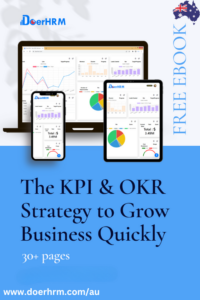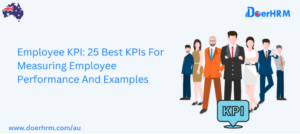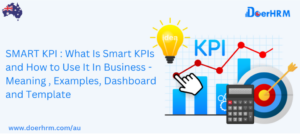The majority of individuals are aware of KPIs (Key Performance Indicators). However, a lot of managers have trouble identifying the KPIs that are most important to their engineering team and to the company as a whole. This video discusses the best ways to create engineering KPIs that are outcome-based and concentrate on the results after the fact.
There are several moving pieces in the KPI process. Sometimes it seems as though a single indicator is either measurably accurate but not actually indicative of performance or accurately reflects company objectives but is not measurably accurate.
Choosing the KPIs that are important to you, your teams, and your company is the tricky part. Understanding the initial purpose of your company’s engineering team is the first step in this process.
Understanding the Roles of Engineering Teams
Company executives establish basic objectives toward which all departments work. As an engineering leader, you must understand how your KPIs relate to your overall goals.
At a high level, company objectives attempt to:
- Increase your profits
- Encourage expansion
- Provide value to customers
- Provide an excellent client experience
Determining KPIs is taking those important, though rather ambiguous, markers of success and specifying the procedures required to achieve them. These are the outcomes that must be stated clearly, planned out, and measured.
Types of Engineering KPIs
Let’s talk about what KPIs should track and how they connect to overall corporate objectives and performance.
- Consistent achievement of goals
Activity in engineering KPIs track things like:
- SLAs
- Uptime
- Compliance
- Increased or decreased headcount
- Bug prevalence
- Metrics for code
Target KPIs should be checked and monitored on a regular basis. These KPIs are normally totally within engineering’s control, although they can occasionally slip through the gaps.
- Externally tracked goals
Traditional business results that are externally tracked goal KPIs include:
- NPS rating
- Utilisation of features
These items assess the perception of your application. Most experts propose utilising externally tracked objectives as guiding metrics to confirm when the application is working properly and to assist you to improve when it isn’t.
- Destination goals
These longer-term joint business and engineering goals attempt to satisfy internal or external corporate objectives. Marketing, for example, might create a campaign to support a release, while sales may require a new feature to break into a new industry. Engineers generally regard these objectives as roadmap breakpoints.
Common Mistakes to Avoid When Monitoring Engineering KPIs
Your team works to produce or deliver anything, regardless of the time or energy necessary. The source of the work may vary based on the purpose, but the overall tracking procedure stays the same.
If your engineering KPIs are defined as “what you need to accomplish and when,” meeting KPIs may soon become a whirlwind of urgent but unnecessary tasks. Set your KPIs with a goal to prevent the swirl.
Sounds simple, but when you’re handling many projects, remote teams, and continuously shifting processes, things may rapidly get tricky. Here are some of the most typical mistakes to avoid when developing an outcomes-based KPI system:
Pitfall #1: Tracking actions rather than outcomes
Engineering KPIs must focus on outcomes rather than actions, no matter how significant those activities are. This is a simple trap to slip into. You may collect data on what your team is doing and tell a compelling story about why the data shows strong progress, but without relating those activities to outcomes, you risk wasting time and energy.
Instead, gather outcomes-based data on a single KPI dashboard and map it back to the objectives your leadership wishes to achieve. Monitor results like shipping releases and bug rates that directly support company-wide goals.
Pitfall #2: Priority misalignment
Now that outcomes, not just actions, are being measured in your KPI system, another blunder to avoid concerns about your priorities. Teams work hard to generate the finest deliverables possible, but in this case, perfection might be the enemy. If you concentrate your efforts on a single KPI or objective, you can achieve it, but at the price of other outcomes.
Not all KPIs are created equal. Having a clear understanding of the significance of your KPIs is critical for keeping your team focused on what matters, assisting you in making tradeoff choices, and obtaining the necessary buy-in to take appropriate action.
Over the medium term, reconsider how much emphasis you place on each KPI to ensure you have a healthy culture and know when to expand resources.
Instead of pursuing a theoretical ideal score or just jumping from fire to fire, KPIs should emphasise your company’s overall goals. Focusing on the proper results may help you maintain balance, uncover your organisation’s true requirements, and shield your employees from excessive stress.
Pitfall #3: Existing processes restrict KPI achievement
Engineering, of course, does not take place in a vacuum. The efforts of your team to achieve KPIs are part of a process. There is a significant chance of duplication of work or, worse, work that does not get done if one team does not understand how their work matches with that of other teams in the company.
Part of setting your KPIs and following them back to the value they give will assist you in identifying KPIs flow.
You may set objectives, create accountability, and measure the proper KPIs that keep processes running smoothly by preparing ahead of time and keeping engineering KPIs linked with goals across teams.
Pitfall #4: Important goals are overlooked
A business mission statement is a fantastic place to start when determining the results you want your organisation to attain. Mission statements, on the other hand, are notoriously vague and difficult to track.
How your organisation responds to market developments and unanticipated emergencies should be consistent with the ideals mentioned in your mission statement. Typically, the values’ inherent goals are not well-tracked.
Tracking key performance indicators that reflect your fundamental principles may help set the tone for the organisation. If one of your core principles is “We treat consumers with respect and promise to make their lives simpler via the usage of our product,” you should establish KPIs to measure how you are making their lives easier.
Engineering may create deeper testing plans to increase product quality and reduce hassles, but linking testing plans to customer satisfaction results is practically difficult without the accountability and measurability that excellent KPIs give. Even if you met your objectives, you wouldn’t have the data to prove that you’re accomplishing the company’s aim.
We recommend that you develop a short, agreed-upon statement that will serve as a guiding light for your business. It doesn’t have to be flawless; simply start anywhere. When it comes to connecting KPIs to business results, this statement can assist fill in the blanks and pinpoint where the crucial goals were missing.
Conclusion
KPIs are about constant improvement rather than perfection. Implementing an outcomes-based KPI approach may assist in creating the gravitational field that keeps engineers in sync with the rest of the organisation, rather than being caught up in the hazy stresses of day-to-day operations.
You will need to examine your KPIs on a regular basis, especially if changes in your engineering structure cause them to no longer correlate with the existing KPIs. I hope these tips will help you avoid some of the frequent mistakes that engineering teams face while embarking on their KPI journey.









